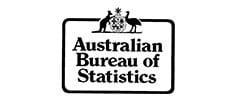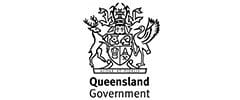Keeping momentum and motivation can be difficult at the moment. In short, that’s what clients have shared with us. Firstly, a lot of people haven’t taken a mid-year holiday. Victoria is still in Stage 4 lockdown and teams are feeling fatigued. Secondly, a lot of people are struggling with the blow out in the number of online meetings. Simply catching up with people informally is more difficult. Subsequently, we are missing that casual interaction and friendly workplace banter. Add to that, the daily negative news feeds.
However, it’s not all negative. Undoubtedly, as we head into Spring, the sun will be shining at bit more. The frost will start to thaw. Furthermore, what we do now can position us nicely for a strong run home – dare we say – to the end of the year.
Understanding momentum
I actually thought writing on the topic of momentum would be pretty straight forward. I started as I always do, by putting a quick search into Google to get a definition. To my surprise, Google responded with the physics definition:
p = m x v
Momentum = mass x velocity
Consequently, down into the rabbit hole I went. Without a doubt, I thought the scientific term can be applied to coaching. I just wanted to work out how.
In short, the theory of momentum suggests that:
- if an object in moving and has mass, then it has momentum;
- objects with a large amount of momentum are hard to stop;
- an object that is not moving, has no momentum.
Let’s think about two objects: an elephant and a mouse. An elephant moving very slowly. And a mouse moving very quickly. The elephant has a large mass and lower velocity (movement). In contrast, the mouse has small mass and higher velocity (fast moving). It is possible that the elephant and the mouse can have the same momentum. Whilst they are not moving at the same pace, the momentum could be equal.
Applying momentum in coaching
With this basic understanding, let us apply this concept to coaching. Importantly, our approach to maintaining momentum around projects and tasks. In general, let’s think about ‘large tasks’ or ‘smaller tasks’. We will generate momentum, if we:
- move a large task along slowly, bit by bit;
- alternatively, move a lot of little tasks along very quickly (smashing a to do list); and
- breaking down bigger goals, into smaller achievable goals.
The key is that we need to be moving. For this reason, whether we are nudging large tasks along or smashing smaller tasks, we are on the move. We have momentum.
Momentum creates motivation creates momentum
Absolutely, we know that when we have momentum, we feel move motivated to do something. Subsequently that feeling of motivation helps create the momentum. What do we need first? Well that can be up to the individual. However, what the laws of physic tell us is that to go anywhere, we need momentum. We need to start moving. Subsequently, from a coaching point of view, it makes sense to be asking quality questions that get the person moving. Using your coaching models for example the ones in our Certificate IV in Workplace and Business Coaching (10834NAT).
Where to start with momentum?
Without a doubt this will all make sense to you. Hence, there are many little things that we can do to keep up the momentum. A starting point might be to draw up a 2 x 2 grid (see right). Clearly thinking about things or tasks that we can; start, stop, do more of and do less of.
Coaching ourselves and our team to keep up the momentum and motivation is important. Without a doubt, asking quality questions and using simple tools is really helpful. Consequently, just like Spring, as the weather warms up, we will start to see the rewards.
Enjoy your coaching.
| Stop | Start |
| Less of | More of |































